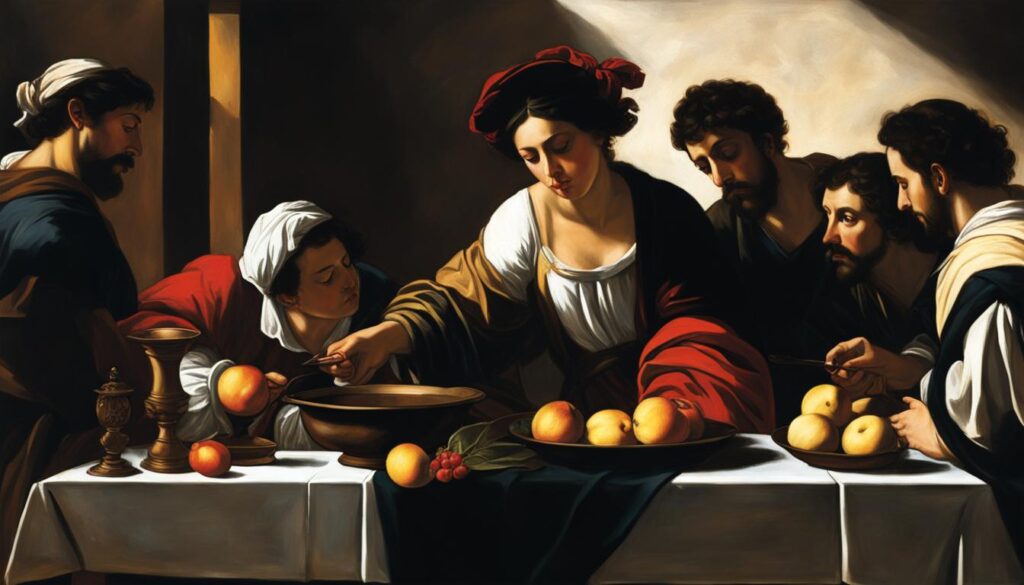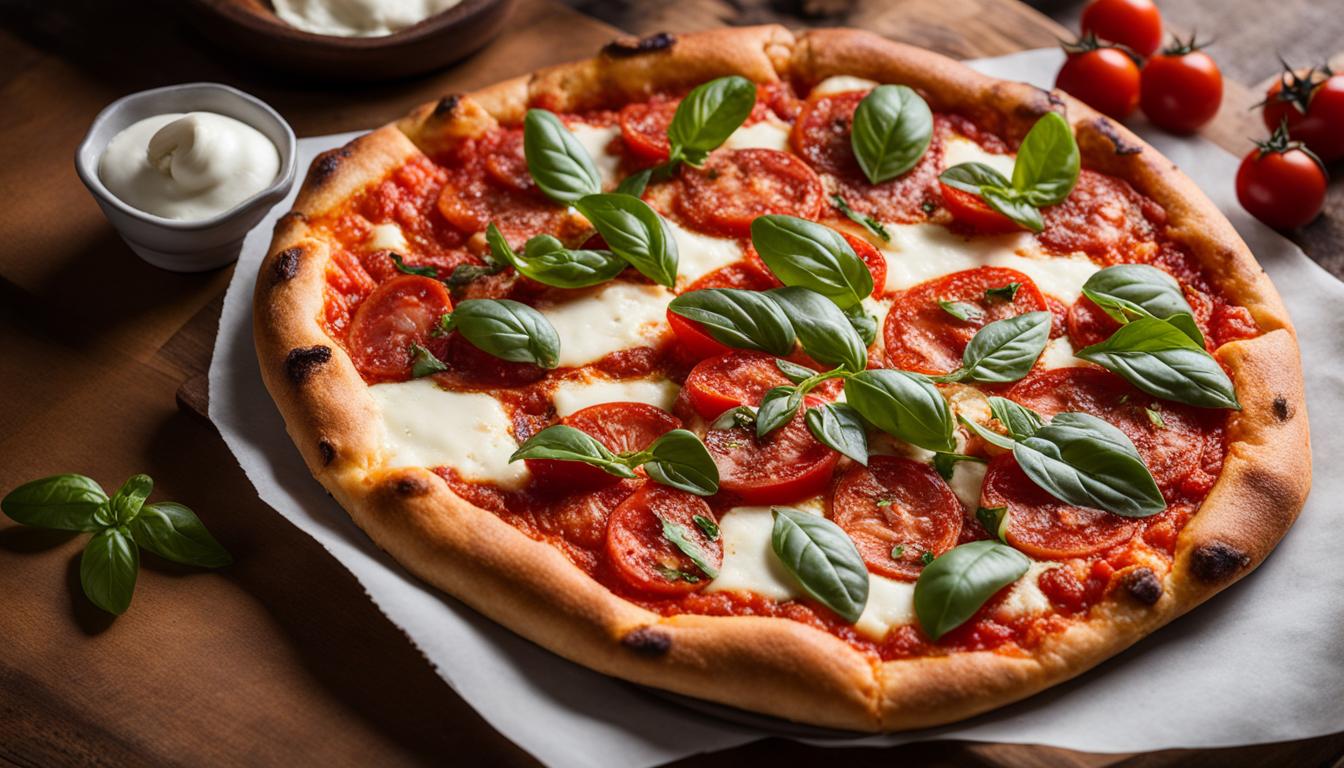In the world of Baroque art and Italian painting, one name stands out as a true revolutionary: Caravaggio. His unique style and bold approach to painting made a lasting impact on the art world, particularly in the city of Napoli, Italy. Known for his dramatic use of chiaroscuro, Caravaggio’s paintings brought a gritty realism to the streets of Napoli.
During his visits to Napoli in 1606 and 1610, Caravaggio created masterpieces that continue to captivate audiences today. Works such as “The Madonna of the Rosary,” “The Flagellation of Christ,” and “The Seven Works of Mercy” showcase his mastery of light and dark, his attention to detail, and his ability to capture the essence of everyday life.
Caravaggio’s art resonated deeply with the people of Napoli, sparking a movement that would forever change the Neapolitan art scene. His influence gave rise to a generation of artists known as the Caravaggisti, who followed in his footsteps and embraced his revolutionary techniques. Notable artists such as Mattia Preti, Salvator Rosa, Joseph de Ribera, and Battistello Caracciolo carried on his legacy, further developing the unique style that emerged from Caravaggio’s time in Napoli.
Caravaggio’s impact on the art world extends far beyond his own works. His time in Napoli sparked an artistic revolution that transformed the Neapolitan art scene and influenced artists throughout Italy. His legacy lives on through the works of his followers, as well as the continued appreciation and study of his groundbreaking approach to painting.
Caravaggio’s Transformative Impact on Neapolitan Art
Caravaggio, a revolutionary artist of the 17th century, left an indelible mark on the art scene in Napoli. Through his innovative use of chiaroscuro and realistic depictions of everyday life, Caravaggio challenged the traditional norms of art. His daring approach inspired a generation of artists known as the Caravaggisti, who eagerly embraced his techniques and adopted his dramatic lighting methods and naturalistic style.
The Caravaggisti movement, coupled with the emergence of the Neapolitan School of painting, heralded a new era in art history. Neapolitan artists, deeply influenced by Caravaggio’s genius, explored the themes and techniques popularized by their artistic predecessor, contributing to the development of the Baroque art movement.
The Neapolitan School of painting, born out of Caravaggio’s transformative impact, pushed boundaries and broke free from conventional artistic norms. It enabled artists to infuse their work with dramatic emotions, profound realism, and unparalleled depth.
Caravaggio’s use of chiaroscuro, the interplay between light and shadow, added depth, intensity, and an element of mystery to his paintings. This technique captivated viewers and drew them into the narrative of the artwork. The Neapolitan artists, following in Caravaggio’s footsteps, incorporated chiaroscuro into their own creations, creating an atmosphere of drama and emotional resonance.
“The Caravaggisti, deeply inspired by Caravaggio’s genius, succeeded in capturing the essence of life and infusing their artworks with raw emotions and startling realism,” said renowned art critic Roberta Conti.
The impact of the Caravaggisti and the Neapolitan School extended far beyond Napoli, influencing the wider Italian art world. Artists from across the country were drawn to Napoli to study and apprentice under the masters of this new movement, further spreading Caravaggio’s artistic principles and techniques throughout Italy.
Caravaggio’s transformative impact on Neapolitan art cannot be overstated. His bold departure from convention and his unflinching portrayal of the human experience reverberated through the art world, forever altering the course of Italian painting. Today, the legacy of Caravaggio and the Neapolitan School continues to inspire and captivate art enthusiasts around the world.

The Influence of Chiaroscuro
One of Caravaggio’s most significant contributions to art history was his mastery of the chiaroscuro technique. By juxtaposing illuminated subjects against dark backgrounds, Caravaggio achieved a striking contrast that emphasized the dramatic impact of light, created a sense of depth, and heightened emotional intensity in his paintings.
This innovative use of chiaroscuro was instrumental in shaping the artistic style of the Caravaggisti and the Neapolitan School. It allowed them to convey profound emotions, establish a strong visual hierarchy, and draw the viewer’s attention to key elements within the composition.
- Caravaggio’s chiaroscuro technique provided a powerful tool for capturing the human form and expressing the complexities of human experience.
- The interplay between light and shadow added a sense of drama and tension to the artwork, creating a captivating visual narrative.
- Chiaroscuro enabled the Caravaggisti and the Neapolitan School artists to elevate their subjects, bringing depth and realism to their paintings.
Caravaggio’s transformative impact on Neapolitan art history cannot be understated. His influence reverberated through the works of the Caravaggisti, the emergence of the Neapolitan School, and the broader development of the Baroque art movement.
Caravaggio’s Masterpieces in Napoli
Caravaggio’s time in Napoli resulted in the creation of some of his most iconic masterpieces. One of his notable works is The Seven Works of Mercy, commissioned for the high altar of the Church of Pio Monte della Misericordia. This painting depicts seven acts of physical mercy, such as burying the dead and feeding the hungry, in a dark Neapolitan alley. The composition also features floating angels supporting The Madonna of the Rosary with Child in the upper part of the painting.
The painting’s detailed portrayal combined with Caravaggio’s use of chiaroscuro creates a powerful image that resonates with viewers. The scene conveys a sense of compassion and serves as a reminder of the importance of showing mercy and kindness to others. Caravaggio’s skillful execution and ability to capture the human experience make these masterpieces truly remarkable.
Another significant work by Caravaggio during his time in Napoli is The Flagellation of Christ. This painting depicts the torture of Jesus before his crucifixion and showcases Caravaggio’s mastery of capturing raw emotion through his use of light and shadow.
Caravaggio’s masterpieces continue to be admired and studied for their revolutionary techniques and powerful storytelling. These works not only reflect his artistic genius but also demonstrate his profound impact on the art world and the Neapolitan School of painting.
Caravaggio’s Influence and Legacy in Napoli
Caravaggio’s impact on the art world extended far beyond his own paintings. During his time in Napoli, he inspired a vibrant artistic community that eagerly embraced his style and subject matter. Many Italian artists, including Mattia Preti, Salvator Rosa, Joseph de Ribera, and Battistello Caracciolo, became his truest followers, carrying on his legacy and further popularizing the Caravaggisti movement.
These Caravaggio’s followers were captivated by his revolutionary use of chiaroscuro and his ability to depict scenes from everyday life with a remarkable realism. They sought to replicate his dramatic lighting techniques and capture the gritty reality of their own surroundings. This devotion to Caravaggio’s style is evident in the works of artists like Preti, Rosa, Ribera, and Caracciolo, who achieved great success and recognition during their time in Napoli.
Building upon Caravaggio’s foundation, these Italian artists developed their own unique interpretations of his style. They continued his exploration of light and shadow, creating powerful compositions that emphasized the emotional impact of their subjects. Through their works, they not only paid homage to Caravaggio but also contributed to the development of the Baroque art movement, leaving their own indelible mark on the history of Italian painting.



